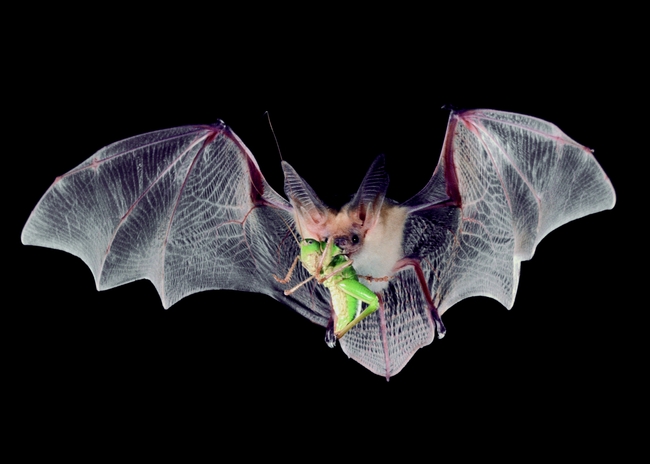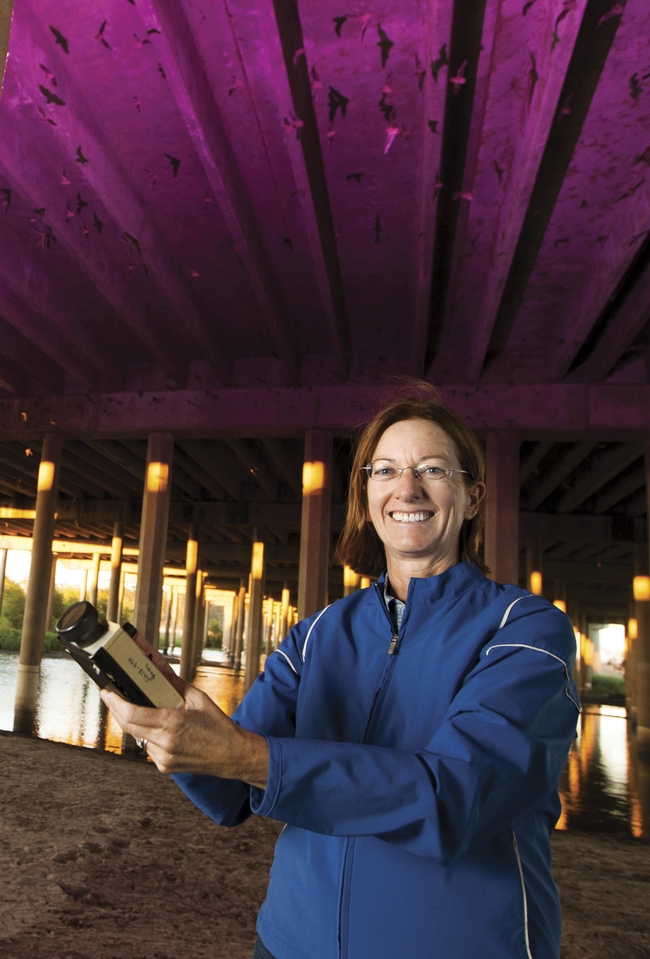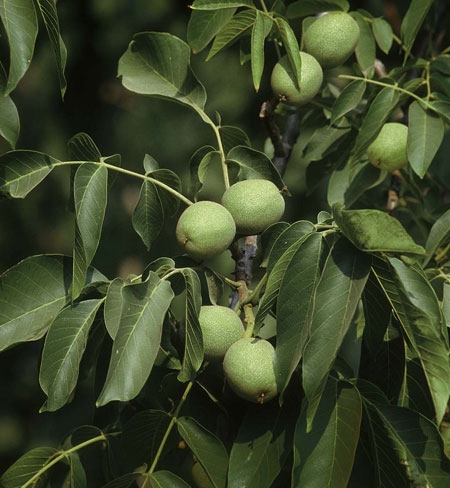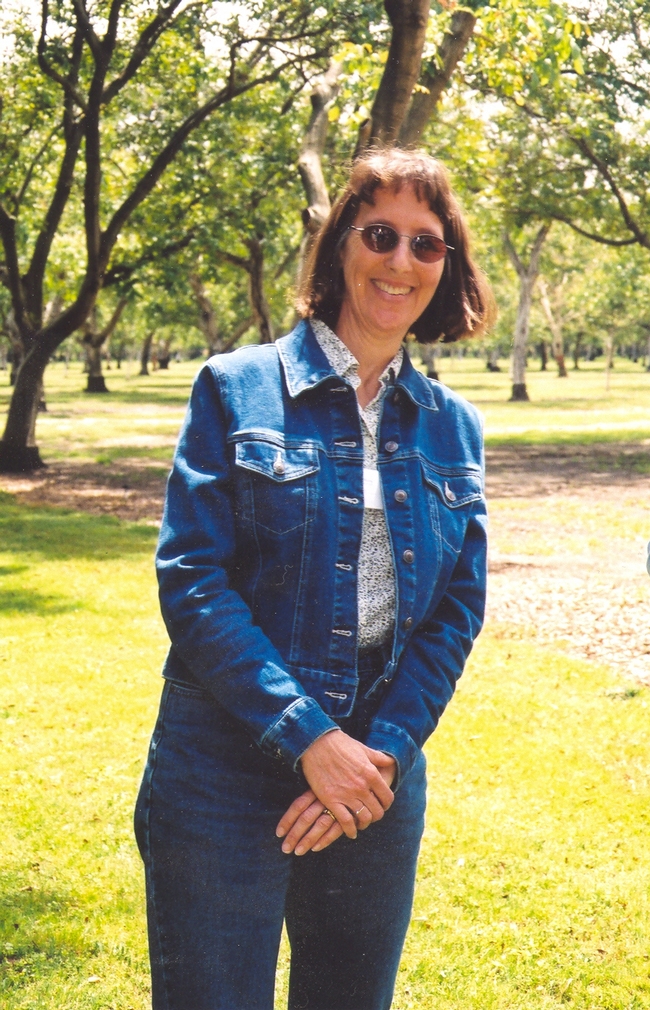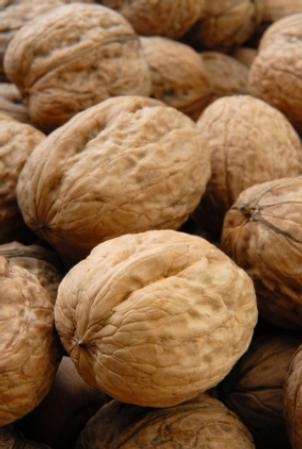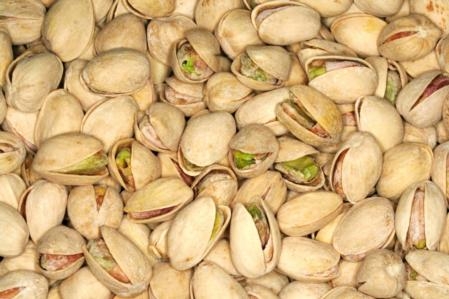Posts Tagged: Walnuts
Bats in the belfry? No, bats in walnut orchards
Bats are voracious predators of night-flying insects that target California crops. Research statistics show that a pregnant or nursing female can consume as much as two-thirds of her body weight in insects per night. That's somewhat like a 150-pound man eating 100 pounds of food per day.
What's the economic value of bats to the agricultural pest control? It probably exceeds $23 billion per year, according to recent studies. However, very little data exists on the benefits of bats for individual crops, such as walnuts.
UC Agriculture and Natural Resources researchers, together with UC Davis, are launching a survey to better understand the value of bats (and birds) on managed lands. The voluntary survey, focused on growers and landowners in California's Central Valley, may be completed online.
Work is already underway to assess the pest-control impact of bats on walnut production in the Central Valley with a grant from the U.S. Environmental Protection Agency STAR (Science to Achieve Results).
California produces almost all of the nation's walnuts. Farmers grow some 500,000 tons of walnuts on 290,000 acres, with the annual crop valued at $1.8 billion. Due to popular demand, new orchards are planted every year, calling for more intensive farming practices to manage costly crop pests. For walnuts, the key pest is the codling moth, a larva that feeds on developing nuts. The adult moths begin to fly and lay eggs on the nutlets in May and produce up to four generations per year.
Growers, as part of their pest control management practices, typically use insecticides, spraying once or twice a year for this pest. Many also use pheromones, a mating-disruption technology that prevents males from finding females. Although generally effective, pesticides are expensive and they can have harmful impacts on the environment.
Bats forage in walnut orchards for codling moths and other insects. Colonies of bats double their activity on farms when they roost in bat houses attached to barns in the orchards. The Mexican free-tailed bat is the most abundant species, followed by the Yuma and California myotis, and five other species, including the pallid bat.
In an effort to quantify the economic impact of bats' consumption of codling moths, we captured 36 Mexican free-tailed bats over a three-night period in an 80-acre walnut orchard in Yolo County. Some 3,000 bats live in the bat houses in an abandoned shop on the property.
The research procedure: We opened our mist net from 11 p.m. to 2 a.m. to correspond with codling moth flights and bat activity, and captured the bats as they returned to the roost after feeding. We placed the bats individually in sterile cloth sacks and kept them there until they defecated, then we released them. We quickly froze the guano pellets and shipped them to a USDA lab, where scientists genetically tested them for the presence of codling moths.
Our preliminary data suggest that 5 percent of these bats – about 150 bats from this colony of 3,000 – consumed at least one codling moth per night. We calculated 30 nights per generation for the codling moth, and four generations per year, with each female moth laying 60 viable eggs on individual nuts.
For a typical 80-acre walnut orchard producing a total of 136 tons of walnuts per year, we estimate that bats can protect about 6 percent of the crop yield, or $29,700 worth of walnuts per season at the current price of $1.65 per pound. That's an economic value of $10 per bat per year. And that figure probably underestimates the true value, since for some species of bats, up to 40 percent of their diet can consist of moths – an average of about 15 moths per night.
The next steps: we are refining our economic data and determining whether these insect-hunting bats help reduce pesticide use in walnut orchards.
Bats provide these pest control services for free while farmers enjoy a decrease of pests in their orchards and an increase in profits.
Co-authors: Rachael Long, UC ANR advisor; and Katherine Ingram, Department of Wildlife, Fish and Conservation Biology, UC Davis.
Thirty-year farm advisor gets her day in the sun
Hasey, a plant pathologist by training, conducts research and works with farmers on a wide variety of crops, plant systems and cultural methods in Sutter and Yuba counties. She called the results of the walnut pruning research "a real paradigm shift."
Hasey and Bruce Lampinen, UC Cooperative Extension specialist in the Department of Plant Sciences at UC Davis, learned that trees that have been trimmed sparingly or not at all produced a bigger yield than trees that were pruned more aggressively.
"We've had several growers adopt it," Hasey said. "We always caution growers that whenever we have something new, to do it on smaller acreages first to see how it works. But there are several growers who are adopting it now because it's working so well. We do have fairly long-term data."
Walnuts are trending upward
Proven health benefits is increasing demand for walnuts, and farmers are reacting by planting more trees, according to an article in the Chico Enterprise-Record. The trend has created a backlog for new trees.
"All the nut crops are doing very well," said Joe Connell, UC Cooperative Extension advisor in Butte County. Markets for almonds, pistachios and walnuts have expanded, and prices are firm, he said.
In 2011, walnuts became the No. 1 crop in Butte County. If growers want to plant new walnut orchards, they must get on a waiting list to buy them in 2015.
UC's red walnut featured in Fresno Bee
The lead food story in the Fresno Bee this week focused on walnuts and their local availability. An important component of the story was the red walnut, a cultivar developed by University of California breeders a decade ago.
Most walnuts grown in California have a light tan seed coat. The "Robert Livermore" walnut has a red seed coat.
"It has a very interesting color and gives consumers and farmers another option," said Chuck Leslie, staff research associate in the Department of Plant Sciences at UC Davis.
Leslie says the nut does not taste significantly different than ordinary walnuts to him. Fresno Bee reporter Robert Rodriguez quoted a Sacramento food blogger in the story who said the red walnut has a milder flavor and works well in recipes ranging from salads to cookies.
UC's red walnut was named after the late Lake County walnut grower Robert Livermore, said Rachel Elkins, UC Cooperative Extension advisor for Lake and Mendocino counties. The Livermore family owns a historic ranch on Mt. St. Helena that is still in operation.
"Robert Livermore contributed to the breeding program and hence the walnut was named for him," Elkins said. "He managed the Bishop Ranch in San Ramon which is now a large commercial business park, but was a very large fruit and nut ranch."

Red walnuts brighten up a plate of cookies.
California nut harvest winding down
- Almond growers expect to meet an early estimate of 1.95 billion pounds statewide, which would be a record
- Pistachio growers in the San Joaquin Valley are enjoying their second-largest crop ever after last year's record yield
- Walnut growers expect this year's yield to be 485,000 tons, slightly lower than last year's 503,000 tons
"The rumors I've heard is that guys are still complaining about the quality" of walnuts, said Rick Buchner, a University of California Cooperative Extension farm advisor in Red Bluff. "We're getting a lot of black husks on them, so there's a suggestion that we may have some husk breakdown and husk fly problems. It's probably too soon to tell yet."


